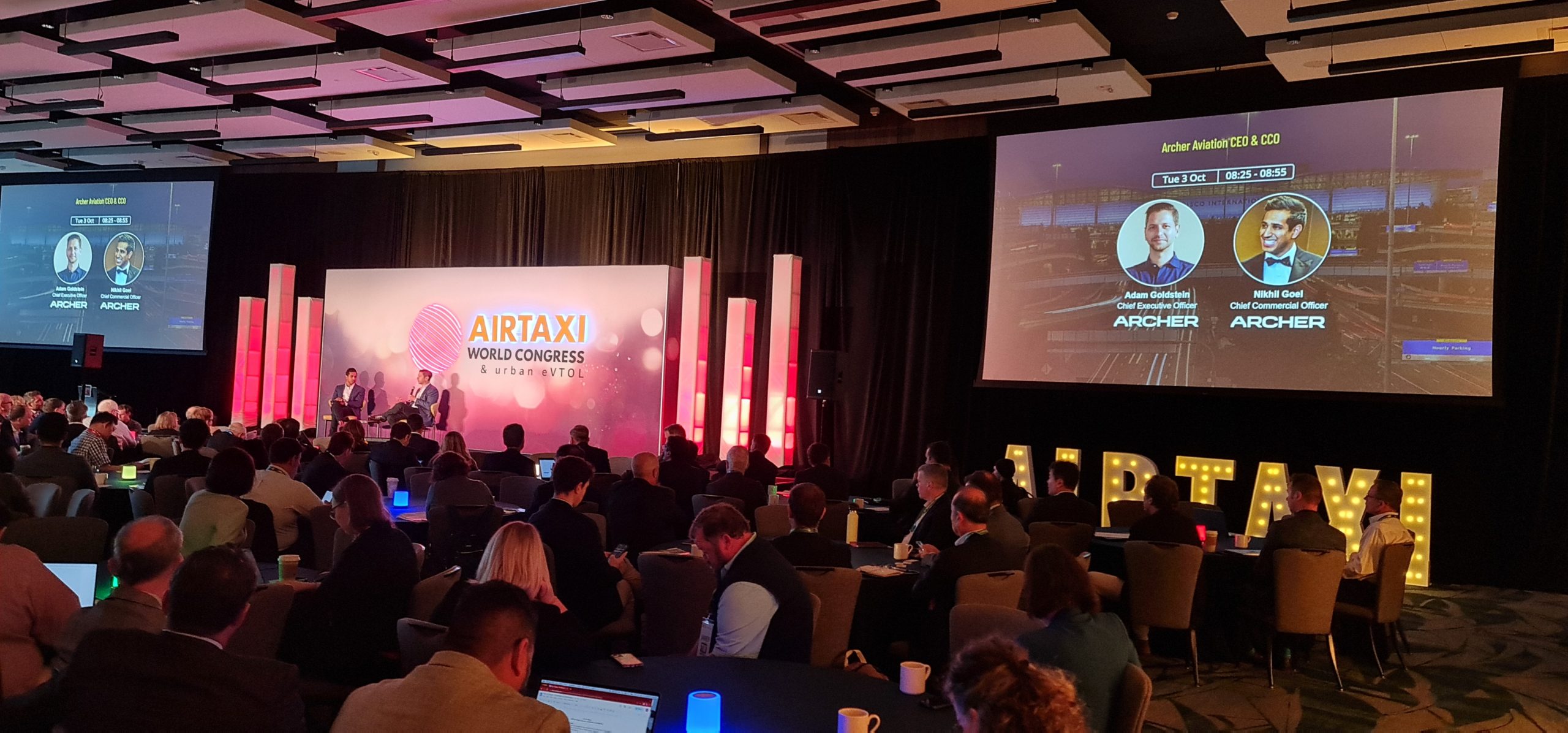
By Philip Butterworth-Hayes
As with all major events, AirTaxi World Congress last week in San Francisco was a show with two very different types of dialogue. On the stage, industry leaders were buoyant, hopeful, convincing. More private conversations, however, suggested there are growing concerns around infrastructure.
Officially, the industry is in a rude state of health and heading at speed towards full commercialisation. Type certification of the EH216 in imminent and commercial operations will be launched over the next few years in 2,000 tourist hot-spots in China. In Europe, the Paris Olympics next year will see the official launch of the European industry with Groupe ADP and partners planning to scale up to 20 to 30 vertiports in the city by 2030, according to the company’s Adjoint au Directeur du Développement International Joyce Abou Moussa. Volocopter representatives were confident their aircraft would be certified in time and Lilium confirmed it had plenty of money. In the USA, commercial operations could start as early as 2025 with operations at scale by 2028; increasing interest from airlines and US Department of Defense funding are propelling Joby and Archer towards the start line.
Saudia’s CEO Captain Ibrahim Koshy was the most optimistic of all, painting a picture of a nation which is transforming its tourist industry, with ambitious plans for four-seat eVTOLs to provide premium service links to the airport for business class passengers and six-seat eVTOLs for new connecting services between regions.
But behind the scenes there were concerns about money and standards for infrastructure.
There are still major disagreements around which services are going to be initially the most viable: intra-urban passenger (flights to the airport and tourism), intra-urban (using existing small regional airports) or cargo. But with room for just one, two or three passengers the business case for early-generation eVTOLs – unless they aimed exclusively at high-net-worth individuals – look fragile.
To be commercially successful, early generation eVTOLs will need to aim for formula one pit stop timings to exchange batteries and shepherd passengers on and off.
There is even greater uncertainty around the business plans for infrastructure. Where is the business case for vertiports – especially if there is little or no non-aeronautical revenue? Private investors have yet to pile into this market in the same way they have supported eVTOL programmes so will government or local authorities have to find the funds?
Time is short and there are more questions than answers around infrastructure.
What will be the direction of travel for battery technology? Lithium ion for the next five years and then solid state after that, seemed to be the consensus. But how much load on the grid will one vertiport operation impose? The technology will move towards on-board charging at some stage. And where are key standards for cabling, fire-fighting and charging? Hopes are pinned on, in the USA at least, SAE delivering a universal charging plug standard by the end of this year.
Away from the relative fixed points of eVTOL regulatory and engineering challenges, the industry seems surrounded by a lake of uncertainty.


